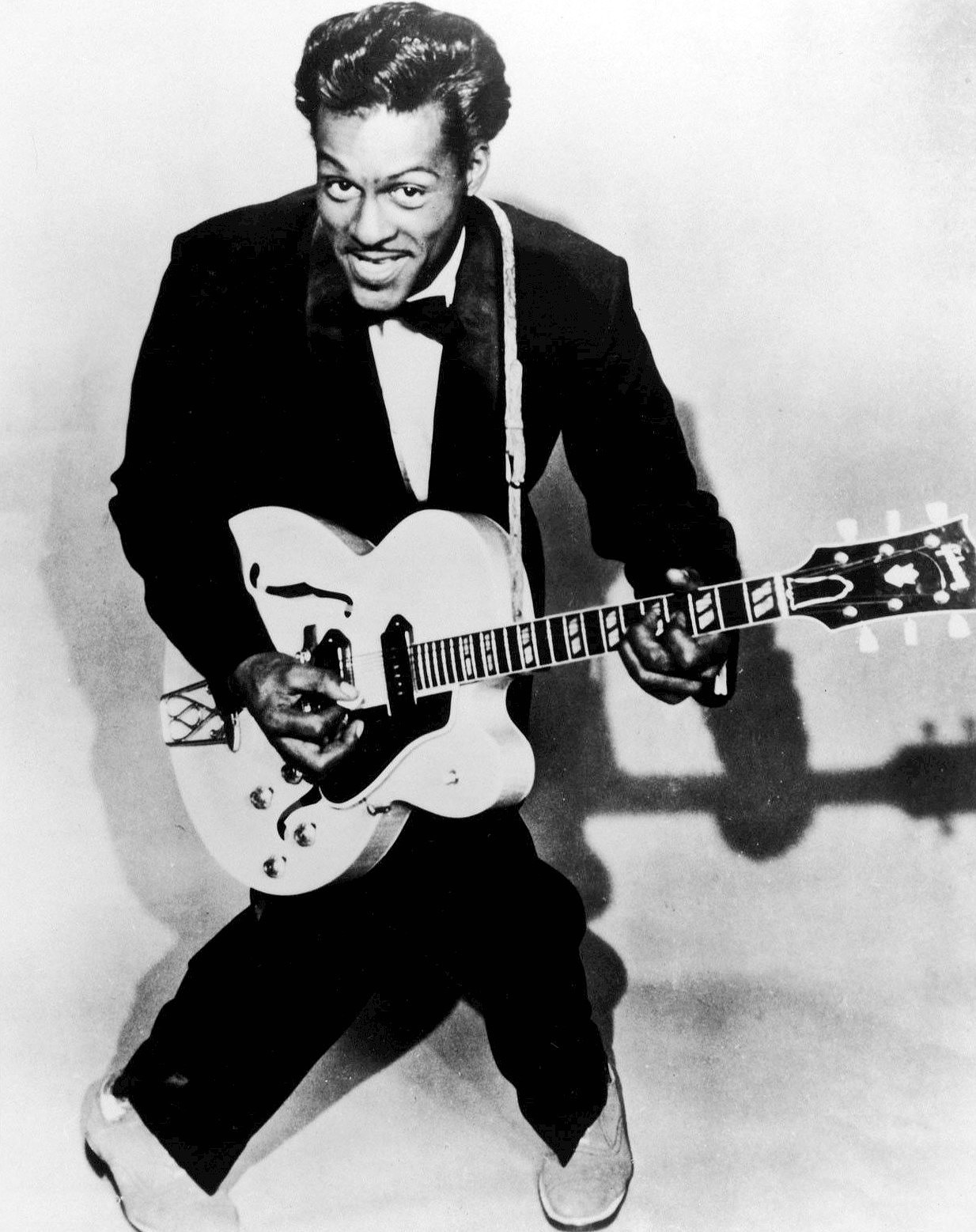Rock & Roll
The 20th & 21st Centuries
Universal Attractions (management), Public domain, via Wikimedia Commons
In the summer of 1955, the Chicago recording company Chess Records released a single called "Maybellene." A unique blend of popular styles, it was highly successful with both white and black audiences and reached the top of the charts within a few weeks, selling over a million copies by the end of the year.
The song's composer, Chuck Berry, was a 28-year-old musician from St. Louis, Missouri. This city's location at the confluence of the Missouri and Mississippi Rivers made it an important locus of cultural exchange. Berry grew up in a middle class family with a piano in the home. He was exposed to the music of his local Baptist church and heard both live and radio performances of a variety of styles, including jazz, country, and blues. As a teenager, he had been arrested for armed robbery and spent three years in jail, where he joined a Gospel choir, adding to his musical repertoire. When he got out, he married a girl named Toddy Suggs, and got a job at an auto shop. To supplement his income, he learned to play the guitar and began performing around town.
In 1953, Berry started performing with various small groups, blending blues and Gospel into a style he called "hillbilly" music. Berry moved to Chicago the following year, where he met a blues bandleader named Muddy Waters. Waters recommended Berry to Chess Records, resulting in his first hit. Soon afterward, with songs like "Roll Over Beethoven" and "Johnny B. Goode," Berry became a giant of American music. The blend of styles pioneered by Berry and others became known as rock & roll.
The chord structure and scale tones of rock & roll are derived from the blues, with harmonies influenced by southern Gospel music and instrumentation taken from jazz. Early rock & roll often incorporates swing eighth notes (compound subdivision) as well. As rock & roll developed, it commonly incorporated a 16-bar form called Song Form: a variation of 12-bar Blues where the first four measures are repeated to create an AABA structure. The sound was further changed by amplification, and especially the use of Chuck Berry's instrument of choice, the electric guitar.
Chuck Berry purchased a nightclub in St. Louis called "Club Bandstand" and turned it into a successful racially integrated performance venue. However, his career hit a snag in 1961 when he was arrested and convicted for transporting a 14-year-old girl across state lines to work at the nightclub. He served a prison sentence at a pivotal time for the genre he had created, but was able to come back and continue his career after his release in 1963.
Rock & Roll continued to develop throughout the 1960s, led by Berry and other artists including Elvis Presley, Johnny Cash, Jerry Lee Lewis, Carl Perkins, and Buddy Holly. The mid-1960s saw the "British Invasion," a surge in popularity of groups from the United Kingdom including The Beatles, The Who, and The Rolling Stones. Genres continued to multiply as the Beatles and artists like Jimi Hendrix experimented with psychedelic rock while Led Zeppelin, Pink Floyd, and Black Sabbath led the development of hard rock and "heavy metal," continued later by groups like U2, Queen, and Iron Maiden.
When the Rock & Roll Hall of Fame was established in 1986, Chuck Berry was inducted into the inaugural class. He continued touring and performing for the remainder of his life. He died in 2017 at the age of 90. His wife Toddy, who had been married to him for 68 years, passed away in 2024.
